There is a quiet magic in walking out your back door and harvesting food for dinner. It’s a feeling of profound connection and self-reliance, a feeling that lies at the heart of this peasant life we’re building. Yet for many, the idea of a garden is daunting. We see images of perfect, weed-free plots and imagine a mountain of work and a deep well of knowledge we don’t possess.
By the way, our garden is never weed-free, but I’ve found a certain sense of peace while drinking tea on my gardening bucket amongst the weeds. For whatever reason, our bees swarm the weeds, and it’s very pleasant to see them full of pollen and happy in their element.
In fact, I got the idea for this article because, in all honesty, these are the plants that survived the massive pigweed infestation our garden suffered after two weeks when we were all out of town on various trips. Our big new discovery this summer was: in the battle of mint versus dead nettle, pigweed will win! But these veggies hid patiently in the jungle, waiting for their big reveal.
Let me tell you a secret: you don’t need a green thumb to grow your own food. You just need good soil, a little sun, and the courage to plant a seed. A garden is not a test to be passed or failed; it is a teacher. And the best way to start learning is with forgiving students. As a longtime gardener and nursery owner, I like to tell all my customers who are scared they might kill their plants: I’ve killed thousands in more ways than you can imagine (a post that I will be sure to create soon), so if they can survive me, they can survive you!
This list is your starting lineup of confidence-builders. These are the hardy, no-fuss vegetables that are eager to grow and resilient enough to tolerate a beginner’s mistakes. Since it’s early August as I write this, we’ll talk both about what you can plant right now for a fall harvest and what you can plan for next spring.
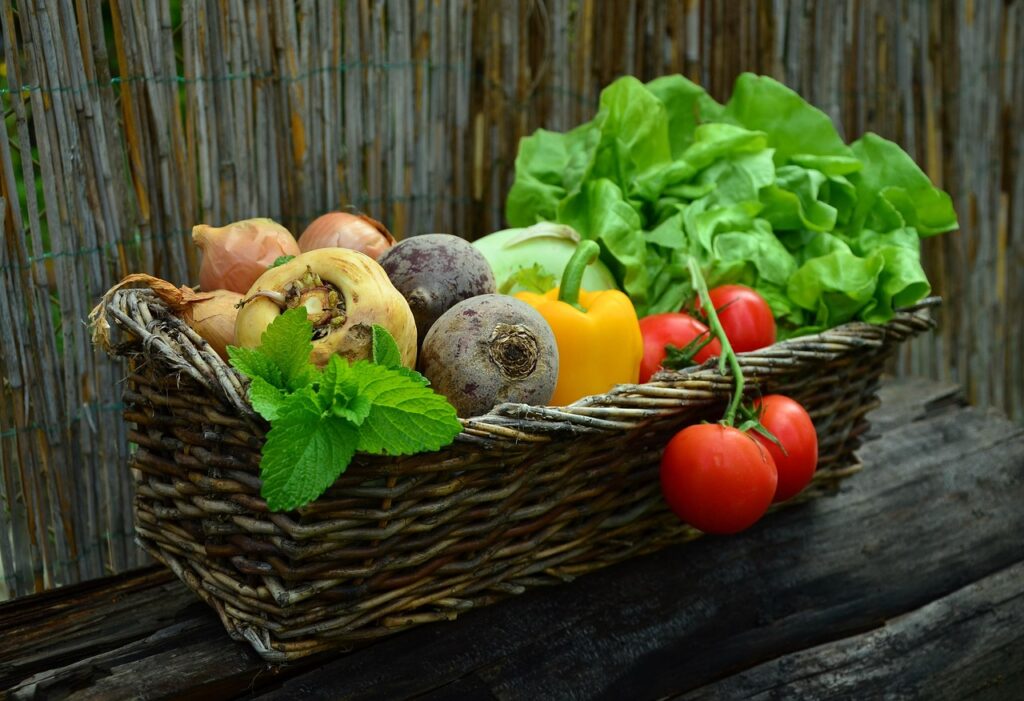
The simple foundations of success
Before we get to the list, remember that success with even the hardiest vegetables depends on three things:
- Sunlight: Most vegetables need what’s called “full sun,” which means at least 6 to 8 hours of direct sunlight per day. Before you dig, spend a day observing your yard. Where does the sun hit in the morning? Where is it in the afternoon? That sunny spot is your garden’s future home.
- Soil: This is everything. You can’t have healthy plants without healthy soil. You don’t need a fancy soil test to start. Just buy a few bags of quality compost from a local nursery and mix it generously into your chosen garden spot. Compost provides nutrients, improves drainage, and is the single best thing you can do for your garden.
- Water: Plants get thirsty. When they are young, and later when they are producing fruit, they need consistent water. Don’t just sprinkle the surface; water deeply at the base of the plant so the moisture soaks down to the roots. The best way to check? Stick your finger two inches into the soil. If it’s dry, it’s time to water.
Now, let’s meet your new, easy-to-grow friends.
1. Zucchini / summer squash
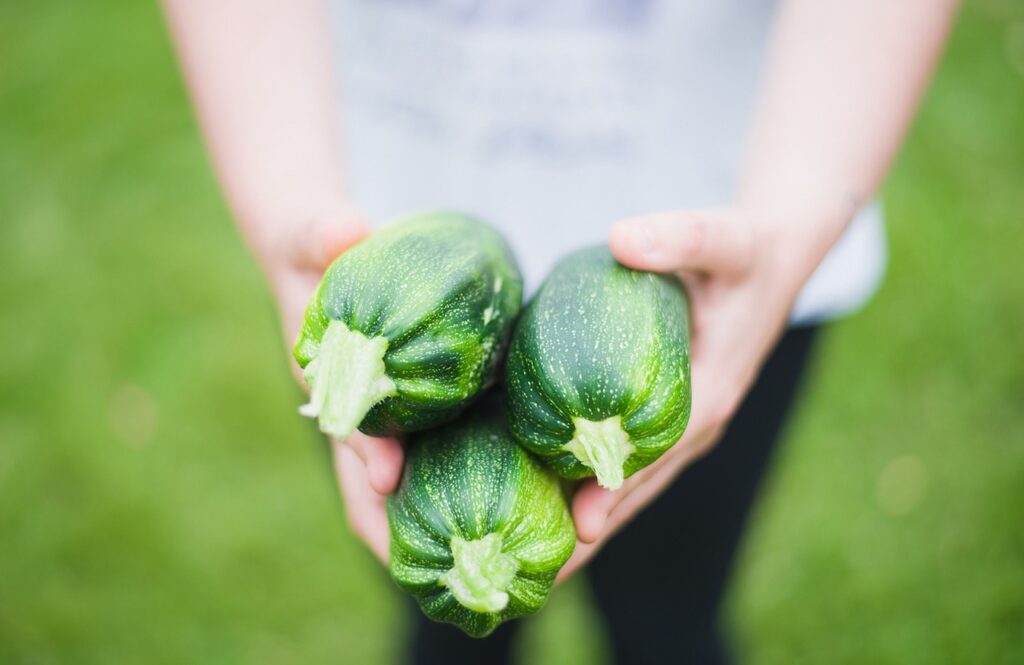
- Why they’re easy: This plant is the definition of prolific. It grows quickly from seed, produces relentlessly, and is so productive you’ll soon be leaving anonymous bags of it on your neighbors’ doorsteps.
- How to plant: Wait until after your last frost in the spring. Plant seeds directly in the soil about an inch deep. Give them space! These plants get big and bushy; check the seed packet, but 2-3 feet apart is a good rule. They also do surprisingly well in large containers (at least 10 gallons).
- Growing yips: Water at the base of the plant to help prevent powdery mildew on the leaves.
- Harvesting: Harvest them often and when they are small to medium-sized (6-8 inches long). This encourages the plant to produce more, and the flavor is far better than the giant, woody baseball bats they can become.
- Pro tip: Don’t throw away the blossoms! The male flowers (on the long, skinny stems) can be stuffed with cheese, battered, and fried for an incredible delicacy.
2. Leaf lettuce and salad greens
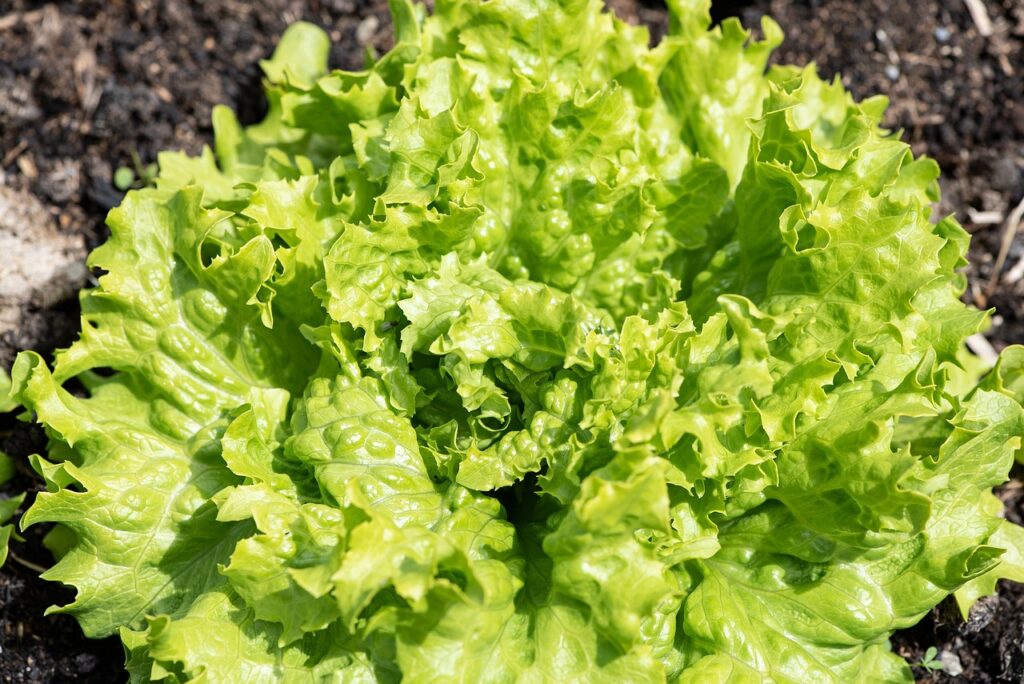
- Why they’re easy: Many varieties are “cut-and-come-again,” meaning you can harvest the outer leaves, and the plant will continue to produce new ones from the center for weeks. It grows fast and is perfect for filling small spaces.
- How to plant: Sprinkle seeds directly into a garden bed or a long planter box in early spring and again in late summer for a fall crop. Barely cover with soil.
- Growing tips: Lettuce prefers cooler weather. In the heat of summer, it can “bolt” (go to seed and turn bitter). Planting it where it gets some afternoon shade can prolong its life. Keep the soil consistently moist.
- Harvesting: Once leaves are about 4 inches long, start snipping the outer leaves with scissors. Leave the central growing point intact.
- Pro tip: Plant a new small patch of seeds every two weeks (“succession planting”) for a continuous, season-long supply of fresh salad.
3. Bush beans
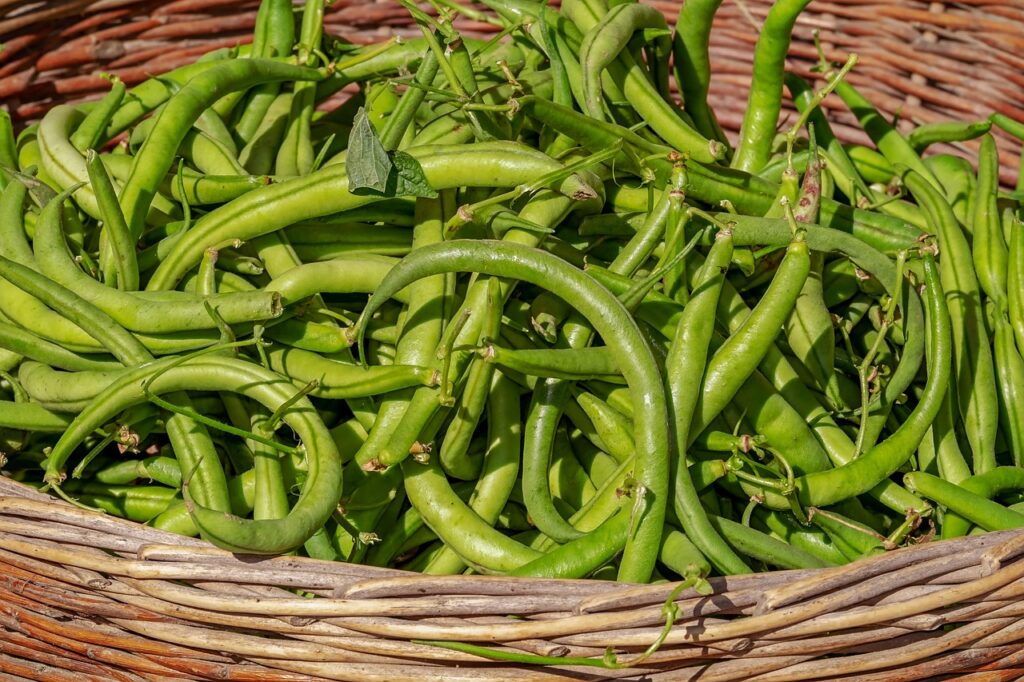
- Why they’re easy: Beans are workhorses. They sprout easily from large seeds (great for kids to handle), require minimal care, and actually improve your soil by “fixing” nitrogen, a key plant nutrient.
- How to plant: Plant seeds directly in the soil after the last frost, about 1-2 inches deep and 3-4 inches apart.
- Growing tips: Unlike pole beans, bush beans don’t require a trellis. Once they start producing, check the plants every day or two.
- Harvesting: Pick the bean pods when they are young and tender before the beans inside become large and lumpy. The more you pick, the more the plant will produce.
- Pro tip: Freezing beans is incredibly easy. Just snap them, blanch them in boiling water for two minutes, plunge into an ice bath, then drain and freeze in bags. It’s a taste of summer in the dead of winter. You can also pressure can them, but I vastly prefer the taste of frozen beans over canned.
4. Radishes

- Why they’re easy: Radishes are the vegetable for the impatient gardener. They go from seed to harvest in as little as 25-30 days! They take up very little space and are great for planting between slower-growing crops.
- How to plant: Sow seeds directly in the garden in the cool weather of spring and fall. Plant them just a half-inch deep.
- Growing tips: Radishes grown in hot weather can become spicy and woody. Keep the soil moist to ensure they grow quickly and stay tender.
- Harvesting: Pull them from the ground as soon as you see the round “shoulder” of the radish pop up out of the soil.
- Pro tip: Don’t throw away the tops! Radish greens are edible and have a peppery flavor. They can be sautéed like spinach or blended into a fantastic pesto.
5. Kale
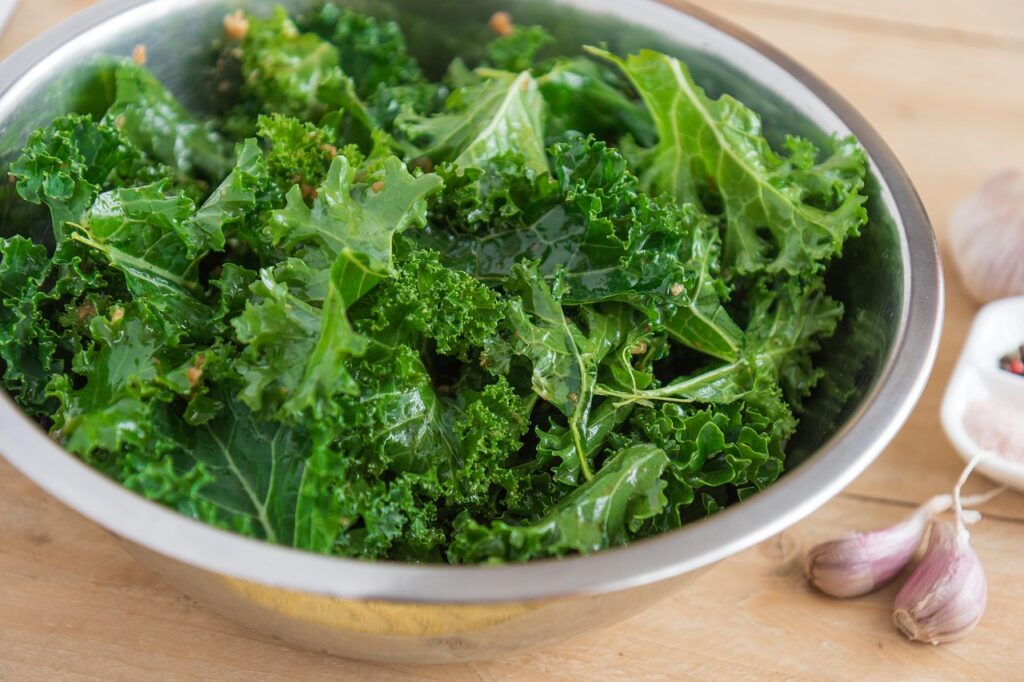
- Why it’s easy: Kale is a nutritional powerhouse and incredibly tough. It can handle a bit of neglect and is so cold-hardy it can often be harvested long after your other plants have died back. Plus, we just leave ours alone, and they produce again the next year!
- How to plant: You can plant seeds directly or buy starter plants. Give each plant about 1.5 feet of space.
- Growing tips: Cabbage worms can be a pest. Picking them off by hand or using a floating row cover can help.
- Harvesting: Just like leaf lettuce, harvest the outer leaves and allow the plant to keep growing from the center.
- Pro tip: The flavor of kale sweetens and improves after it’s been through a light frost. It’s one of the last things you’ll be harvesting from your fall garden.
6. Swiss chard

- Why it’s easy: If spinach has given you trouble, try Swiss chard. It’s more tolerant of heat, more productive over a long season, and stunningly beautiful with its colorful stems.
- How to plant: Sow seeds directly in the garden in the spring, about a half-inch deep.
- Growing tips: It’s a very low-maintenance plant. Provide consistent water and you’ll be rewarded.
- Harvesting: This is another cut-and-come-again hero. Harvest outer leaves with a knife or by twisting them off at the base.
- Pro tip: Cook the leaves like spinach and the stems like celery. It’s two vegetables in one!
7. Cherry tomatoes

- Why they’re easy: While large heirloom tomatoes can be fussy, cherry tomatoes are their easy-going cousins. They are far more resistant to common diseases and produce hundreds of sweet, snackable fruits on a single plant. When we have the occasional “bad tomato” year, we usually still get a bumper crop of cherry tomatoes.
- How to plant: It’s easiest for beginners to buy starter plants. Plant them deep, burying the bottom two-thirds of the stem, after all danger of frost has passed.
- Growing tips: Tomatoes need support. Use a sturdy cage or stake. You might as well put the cage or stake in when you plant, because they’ll grow quickly when the weather heats up. Water deeply and consistently at the base of the plant to prevent cracking.
- Harvesting: Pick them when they have a deep, uniform color.
- Pro tip: A single cherry tomato plant in a 5-gallon bucket on a sunny patio can provide you with fresh tomatoes all summer long. You don’t need a huge garden for this one.
8. Potatoes

- Why they’re easy: There’s nothing more fun than a potato harvest. It’s like digging for buried treasure. They are a hardy crop that stores well for the winter.
- How to plant: In the spring, plant “seed potatoes” (which are just small potatoes) in trenches about 4-6 inches deep. I highly recommend buying certified seed potatoes from a nursery (I usually get ours from Johnny Seeds online) to avoid potato blight.
- Growing tips: As the green plant grows up, you need to “hill” it by mounding soil or straw around the stem. The new potatoes form off of these buried stems.
- Harvesting: When the plants flower and then start to die back, you can carefully dig up your potatoes.
- Pro tip: Dig up your potatoes carefully to avoid accidentally puncturing them. I found that when I used my large digging pitchfork, I almost always punctured the largest potato, which drastically reduces the amount of time you can store them.
9. Peas (sugar snap or snow)
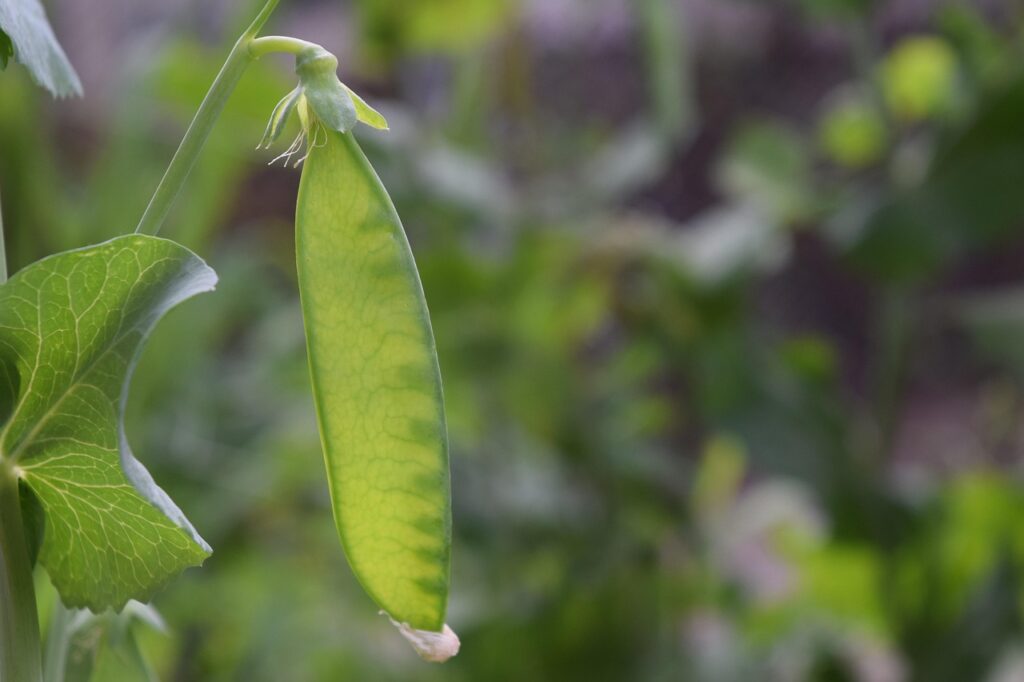
- Why they’re easy: Peas love cool spring weather and are one of the first things you can plant. They grow quickly from seed and climbing them up a simple trellis is a beautiful sight.
- How to plant: As soon as the soil can be worked in the spring, plant seeds about an inch deep along the base of a fence or trellis.
- Growing tips: Provide a trellis for them to climb right away. They’ll find it.
- Harvesting: Harvest snow peas when the pods are flat and sugar snap peas when the pods have plumped up. Pick often!
- Pro tip: The best garden snack, bar none. The odds of a full basket of freshly picked sugar snap peas making it all the way to the kitchen are very, very low.
10. Garlic
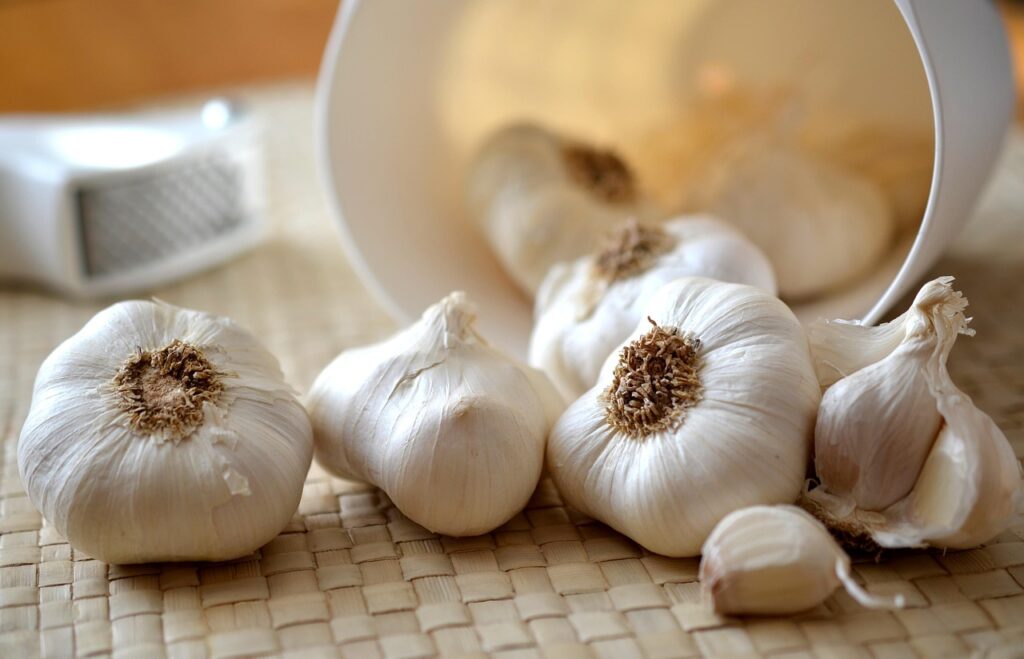
- Why it’s easy: Garlic is the ultimate “plant it and forget it” crop. It has almost no pests and requires very little care once planted.
- How to plant: This is a fall-planted crop. In mid-autumn (September-November, depending on your climate), separate a head of garlic into individual cloves. Plant each clove, pointy-side up, about 2 inches deep and 6 inches apart.
- Growing tips: Cover the bed with a thick layer of straw mulch for the winter. In the spring, shoots will emerge. Stop watering in early summer when the bottom leaves start to turn yellow.
- Harvesting: When about half the leaves have yellowed and died back (usually mid-summer), carefully lift the bulbs from the ground.
- Pro tip: You can plant garlic from the grocery store! Just make sure it’s organic, as non-organic garlic is often sprayed to prevent it from sprouting. Curing your own harvested garlic will give you a supply that lasts nearly until the next harvest.
What to plant right now (in early August)
Don’t wait until next spring to get your hands dirty! August is the perfect time for fall gardening in most of the U.S. You can plant seeds now for:
- Leaf lettuce and salad greens
- Radishes
- Kale
- Swiss chard
- Bush beans (if you have about 60 days before your first frost)
It’s also the perfect time to start preparing a bed for Garlic, which you’ll plant in a couple of months.
Gardening is a skill, and like any skill, you get better with practice. Don’t be overwhelmed. Pick two or three vegetables from this list that sound delicious to you and start there. The joy of eating something you grew yourself, no matter how small, is a reward unlike any other.
Which vegetable will you try first? If you’re an experienced gardener, what’s your go-to hardy vegetable that we missed? Share your thoughts in the comments!

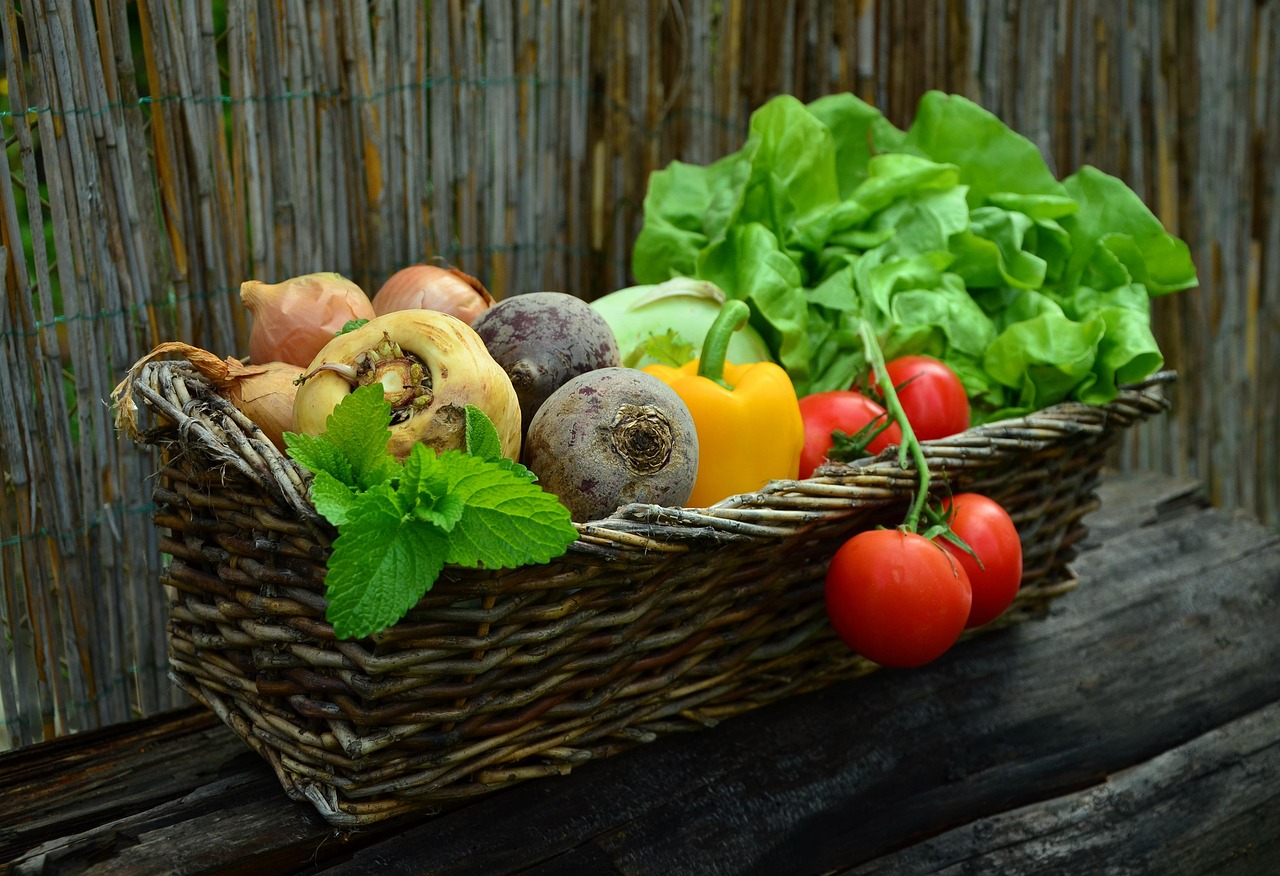

Leave a Reply